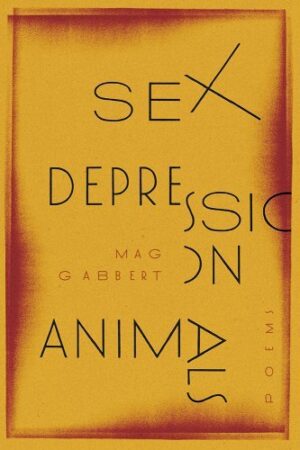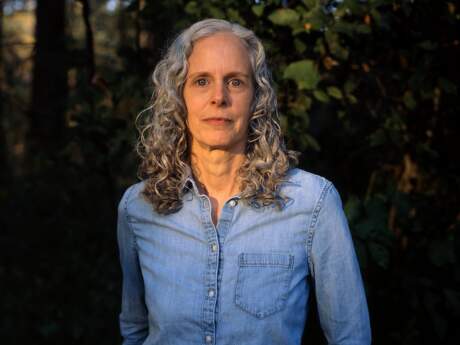In Their Own Words
Mag Gabbert on “Bone”

Bone
the day my fingers were folded into
a swinging door’s hinge
and pressed there like flowers
the way my father explained
his wife’s cancer as if it were
ice the way his voice fractured
in college my boyfriend’s father
tried to free a horse
with hooves stuck in a cattle guard
then it reared from the sparks
each leg snapped like a matchstick
and it collapsed into ashes
why does this swarm
of bees hang from a tree limb
like a chest without ribs
and why do cracked ceramics
when repaired with gold lacquer
seem to glimmer between seams
somewhere the wings
of a resting monarch
close and open like eyelids
somewhere
a fuse
is being lit
somewhere a snake
slips outside of his skin
as he slips his jaw open
Reprinted from Mag Gabbert’s SEX DEPRESSION ANIMALS, used by permission of Mad Creek Books, an imprint of The Ohio State University Press.
On "Bone"
Over the years my writing process has become less linear, and my poems perhaps seem more fractured and swept back together. Much like the Japanese Kintsugi technique this piece alludes to, wherein broken vessels of pottery are re-fused with a mixture of lacquer and precious metal, so that their cracks are illuminated rather than hidden, I’ve grown more and more interested in the tension that manifests when I collect a few slivers of imagery, experience, dialog, research, and whatever else over time, then pull some of those out of the bag and set them next to each other. Often, I’ll notice a kind of energy—a spark—leaping between certain segments, and that’s how I start to see that those slivers belong together.
This poem was perhaps the first piece I ever wrote in its entirety by way of the dislocated process I’ve just described. I had a five or six-page document full of poemless snippets I’d gathered, and—rather than waiting for an opportune space to appear now and again for one of them in a new draft, as I’d done in the past—I decided to see what might happen if I cut each one out physically from the page and started rearranging the lines on my desk. This time, I wasn’t trying to fill a void or to build any connective tissue around those segments. Instead, I just let them be what they were: thin strips of white paper with just a couple of printed lines. It was like piecing together a paper-doll skeleton, and the finished poem itself remained correspondingly sparse. Stripped down to the bone.
In this particular instance, the lines that created the most friction all seemed to share a sense of being on some type of brink, or of simply being on edge. This is a state that can make a person both fragile and dangerous, I think. Like when you see something so beautiful, it almost hurts—knowing the temporality of it all. Or when you’re so shredded by grief, it’s like you could walk through fire and not get burned. This poem is my version of all of those things mixed up and stacked together. You might call it a tower of possible breaking points. And, for me, each time I arrive at the end, I’m still left feeling as if I’m waiting for the snap.



